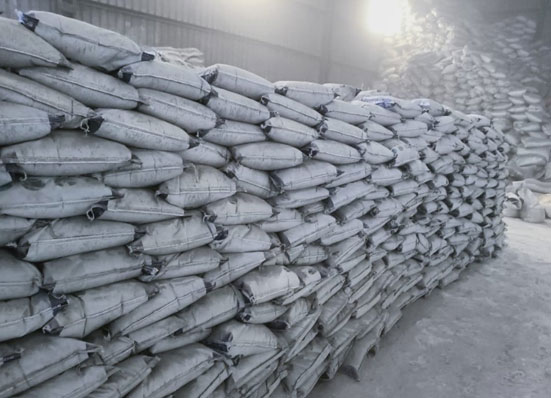
Aluminum is an industry that uses a lot of carbon. All the production takes place at graphite electrode plants (GEPs). The raw material for these plants is calcined petrol coke. This is a key component of carbon-based processes. It's used in a variety of production processes, such as the manufacture of titanium dioxide and steel, the anode arc for aluminum melting, or the commercial production of calcium carbide.
Calcined Petroleum Coke (CPC) is basically a form of solid coal made by heating heavy crude oil to high temperatures and distilling it in a coker. In this process, large hydrocarbons are broken down into smaller particles. After the coke has been thermally treated in a Rotary Kiln to reduce volatile matter, and boost elemental Carbon content, it is purified.
A typical coke has a bulk density of around 1100 kg/m3 and a specific gravity of about 0.45. This coke is also relatively hard and has a lower melting point. Low melting point and high hardness makes it an excellent refractory, hence its use in smelters.
This carbon source is extremely refractory and has an extremely high fixed carbon of 87-95%. Because of these properties, calcined petroleum coke is used by the graphite electrode industry as its primary raw material for anode production. The material has an electrical conductivity and a very low reactivity towards air (oxygen), CO2, or both.

Due to the high surface area of calcined petrol coke, activated coal can be produced. The use of activated carbon in power plants, industrial installations and other facilities to remove SO2 is beneficial. This material can be also used to neutralize odors that are caused by liquid or gaseous pollution. It is also used to clean water and reduce the toxic waste gases such as those from coke ovens.
Exposure to petcoke by humans can cause respiratory issues, but only for coke oven employees. It is not known to pose a health risk for urban exposure, except in terms of its potential to aggravate asthma and other lung conditions.
The pyroscrubber, which removes SO2 in flue gases from rotary furnaces, adds value to the calcined coke. For many new calciners, it has become mandatory to adhere to historical V specifications regarding sulfur emissions. A pyroscrubber's investment is small compared to a completely new calciner. The trend towards higher V specifications, combined with the tighter SO2 emissions limits is likely to continue pushing more smelters toward CPC blending. It will enable them to blend rotary coke and shaft-calcined sinter to reach the desired bulk density and reactivity. It will also help to maximize their project costs.

Write a Message